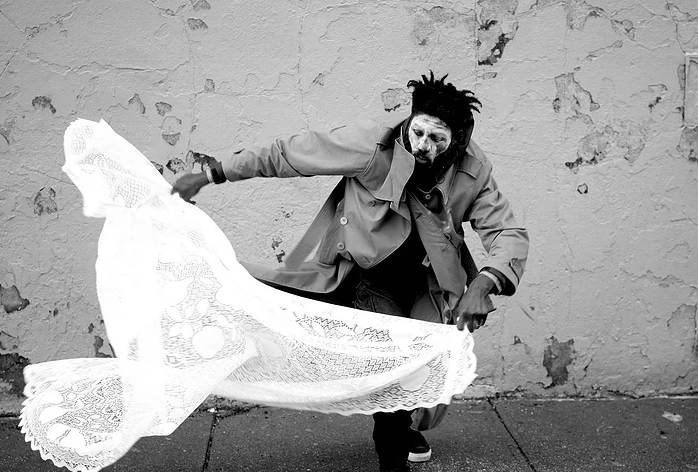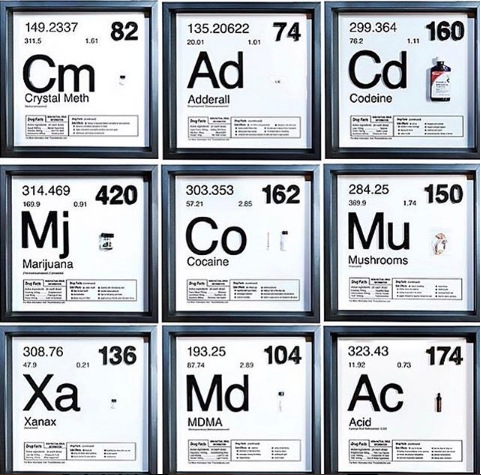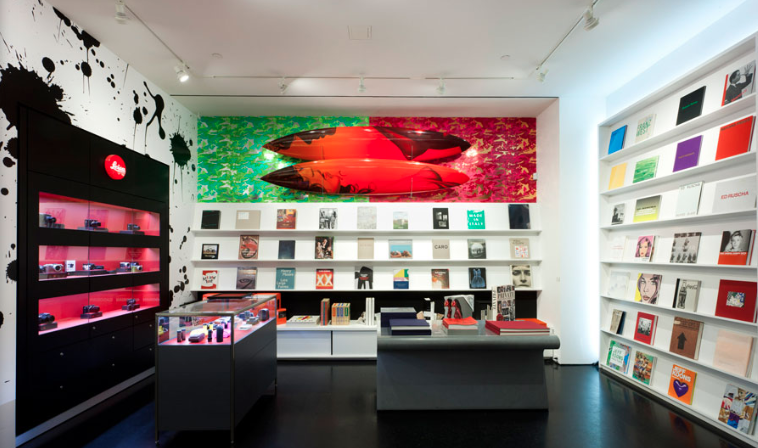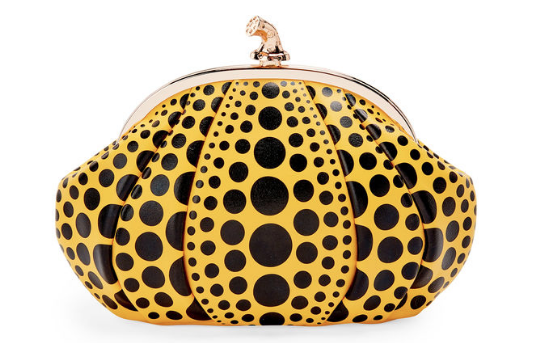8 Tips on Successfully Collecting Art on a Millennial’s Measly Budget
Let’s face it: A whopping half of U.S. millennials still receive some financial support from their parents, even if they are living on their own. When you are struggling to pay your cell phone bill, buying and collecting art might seem like a pipe dream. But for those of us on a modest and frugal budget whose apartment walls are screaming for some curation and sophistication, do not despair. The internet and social media has made it easier to connect with emerging galleries who are trying to get noticed, art fairs that are coming to a city near you, as well as newbie artists who are trying to amass a following.
Whether you are looking at investing in art from a financial standpoint or an art lover (like myself) who wants to buy up everything, here are some tips to get your art collection up and running.
Felix Gonzalez-Torres, “Untitled (Portrait of Ross in L.A.),” 1991. Photograph courtesy of MoMA.
1. Interactive exhibitions that allow you to take a piece of the work with you: In a conventional museum setting, we all have the same mantra running through our head: DO NOT TOUCH OR GET TOO CLOSE. Participatory exhibitions like “Take Me (I’m Yours)” at the Jewish Museum actively encouraged people to touch and take home objects like Felix Gonzalez Torres‘s candies that were wrapped in red, silver and blue cellophane or Alex Israel‘s hand-made pins. Over the summer, MoMa had a survey of Louise Lawler’s work entitled “Louise Lawler: WHY PICTURES NOW” in which visitors could take copies of a print that Louise Lawler and Felix Gonzalez Torres collaborated on.
Bring these keepsakes home and put them up on your walls and in your bookshelves.
Nyugen Smith and Kwesi Abbensettes, Untitled, photographed during Smith’s residency at Fresh Milk Artist Residency, Barbados, 2017. Photograph courtesy of the artist.
2. Get To Know Emerging Artists: With the number of new galleries and art spaces popping up on the Lower East Side, Chinatown, and Brooklyn (to name a few, Sardine, Grey Area, and Brooklyn Waterfront Artists Coalition), there are many opportunities to attend opening night receptions and to meet the artist or the gallery director in-person to inquire about affordable works. Add yourself to galleries’ mailing lists to get invited.
Contacting performance artists directly is another great way to find inexpensive works. Find artists you like through Panoply Performance Laboratory, Grace Exhibition Space, or another art space dedicated to performance art near you. By buying a signed limited edition photographic print, or another art work, from a performance artist you also support their practice.
Do not forget that second-hand stores like Housing Works, flea markets such as the Brooklyn Flea, and bookstores like Powerhouse Arena are great places to score prints, art publications and potentially signed sketches by emerging artists.
Works by Daniel Allen Cohen (@thisisaddictive) will be on sale at Affordable Art Fair New York in March. Photograph courtesy of @gothamartreview.
3. Art Fairs that are affordable, no really: The Affordable Art Fair is an international art fair that travels to different cities around the world, featuring a wide variety of contemporary art from upcoming as well as established artists. Founded in 1999, the Affordable Art Fair now welcomes over 200,000 visitors per year and will be coming back to New York City in March.
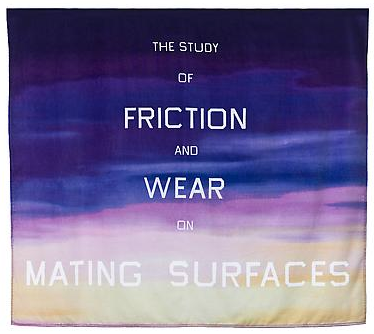
Ed Ruscha Towel, 70 x 60 inches, 100% cotton beach towel, Art Production Fund. Photograph courtesy of Art Production Fund.
4. Pop-Up Sales and Artist Collaborations: In conjunction with Magnum Photos, Aperture Foundation in Chelsea recently had a flash sale where photography lovers could snag signed prints by famous photographers Hank Willis Thomas, Mary Ellen Mark, Joel Meyerowitz, Alex Webb, and more. And not to worry, this isn’t your only chance: New York Magazine is currently selling reprints of some of their most iconic covers including one that artist Alex Katz designed for the magazine’s 50th anniversary issue. Art Production Fund, a non-profit organization dedicated to expanding awareness about public art, has a great collection of towels (who says you can’t frame a towel?), plates, trays, and other objects designed by artists they have collaborated with like Yayoi Kusama, Ed Ruscha, Jeff Koons, and Marilyn Minter.
Pro tip: If you miss a limited edition opportunity or artist collaboration keep an eye out on Ebay for secondary sales.
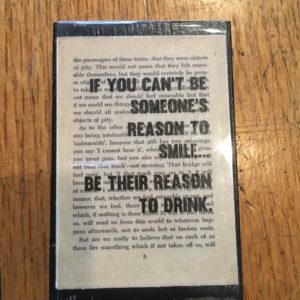
Jeny Callender. Photograph courtesy of the author.
5. Scour local bars and coffee shops: I recently visited a brewery and distillery in Williamsburg called Interboro that had an Art-o-mat® machine, a retired cigarette vending machine that has been converted to sell mini-works of art that you can purchase for $5 dollars each. Currently, there are over 400 contributing artists from 10 different countries. There is something for everyone (I walked away with a small woodblock by artist Jeny Callender) and you can check out the full gallery of different options here.
The Gagosian Shop. Photograph courtesy of Gagosian.
6. Grow Your Library: Buying limited edition books is a way to not only indirectly collect, but to grow your selection of beautiful coffee table books. High-end galleries like David Zwirner and Aperture have an in-house publishing program that produces a handful of exhibition catalogues, monographs and artist books. Other galleries, like Gagosian, have shops and smaller galleries usually have the odd artist books for sale.
If you are looking for something a little on the funkier side like a zine, the NY Art Book Fair presented by Printed Matter (which is coming back to MoMA PS 1 in September) is an amazing place to meet booksellers, artists, and get your hands on items from over 370 institutions, booksellers, and independent book publishers.
Be creative, you can frame bookpages. Nut, a charitable book project featuring female artists, even has perforated pages to this aim.
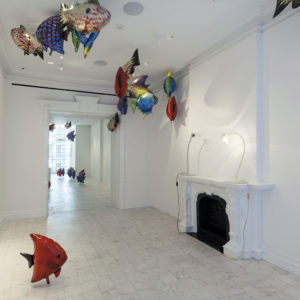
Philippe Parreno, “My Room Is Another Fish Bowl.” Photograph courtesy of Brooklyn Museum of Art.
7. Get To Know Your Taste in Art: Unfortunately, Andrew Wyeth’s “Christina’s World” isn’t for sale at MoMA (I would be the first in line) but visiting museums and galleries are a great way to explore the kind of art you like and can get you one step closer to what you would ultimately love to have on your walls. Collecting art (and other decorative oddities for that matter) and learning about your tastes does not need to happen overnight—be thoughtful about mapping out where you want to collection to grow within your apartment.
And, do not forget that collecting means that it’s your time to let your inner funk out; no art is too weird if it makes you happy! Think back to the recent sale of Philippe Parreno’s “My Room is Another Fish Bowl” which consisted of fish balloons floating around.
Yayoi Kusama, Pumpkin Clutch, MoMA Store. Photograph courtesy of MoMA.
8. Expand Your Definition of “Art”: Don’t limit yourself to thinking that the painting in your grandmother’s basement is the only thing out there! The definition of art can be broad, including but not limited to paintings, photography, sculptures, ceramics, woodblock prints, woven materials, blown glass, and video installations.
Want something more out there that you don’t necessarily need to hang up on your walls, or better yet that you can wear? In conjunction with Performa’s biennial which ran through November 19th, art lovers and skateboarders alike had the opportunity to buy hooded sweatshirts, t-shirts, patches, beanies and skateboard decks designed by artist Barbara Kruger in collaboration with the popular brand Volcom.
Lastly, if you are one of the many who couldn’t make it to either of the Yayoi Kusama exhibitions at David Zwirner’s uptown and downtown location, you can buy a mini Yayoi Kusama pumpkin or a clutch at the MoMa store in Soho.
***
Over time, your collection will grow with you (and hopefully your bank account). The ultimate goal is to find pieces that will best suit you either in the long or short-term, whether you are looking for the art to accumulate value so you can re-sell or your collection simply creates a calming atmosphere in your apartment.
Be confident about your choices and remember that a gallery owner or an art advisor can only go so far as to tell you the works that are currently hot in the market or might be profitable but you are the best judge about what will and won’t work in your humble abode —just think back to Andy Warhol’s first ever exhibition put on by LA gallerist Irving Blum and Walter Hopps which was a total flop. It goes to show that we all start somewhere within the art world and that without a crystal ball it is impossible to tell which artist is going to make it and what work will be valuable down the line.
What's Your Reaction?
Alexandra Israel graduated from Bates College in 2010. A museum aficionado since her introduction to Jean Dominque Ingres' portraits as a small child, she enjoys spending her free time at museums and finding off-the-beaten-track gallery shows. Israel has been working in PR for over seven years, primarily within book publishing and in the art world. She has held positions at Penguin Book Group, Aperture Foundation, and Third Eye among others. l Instagram l



